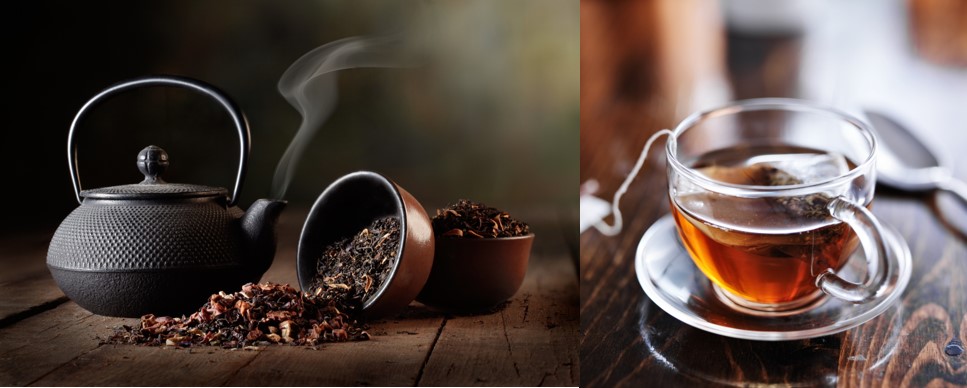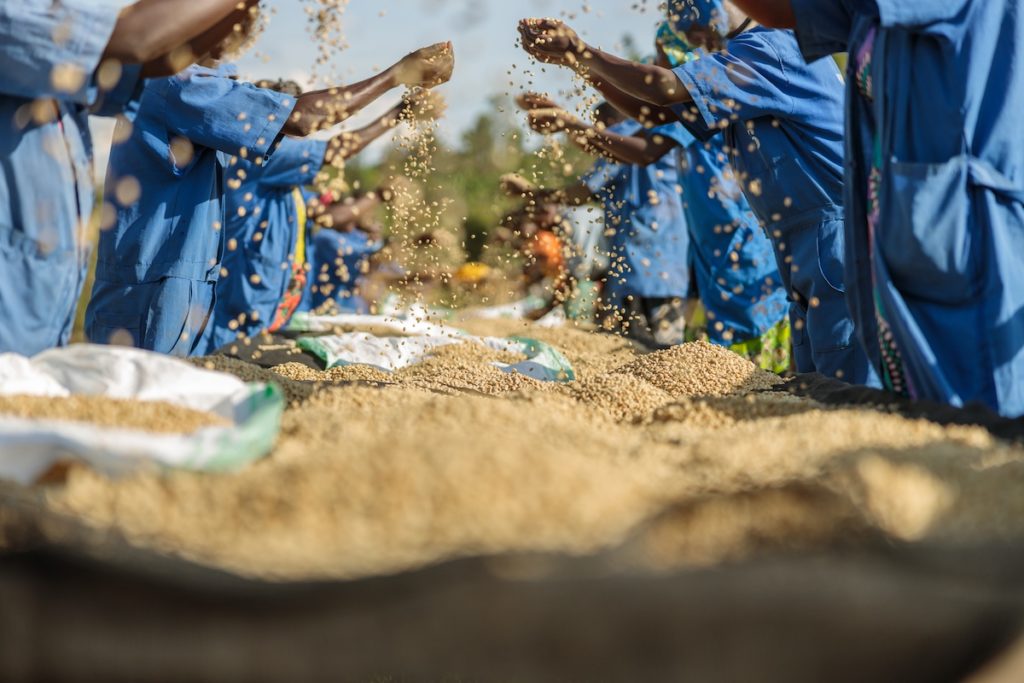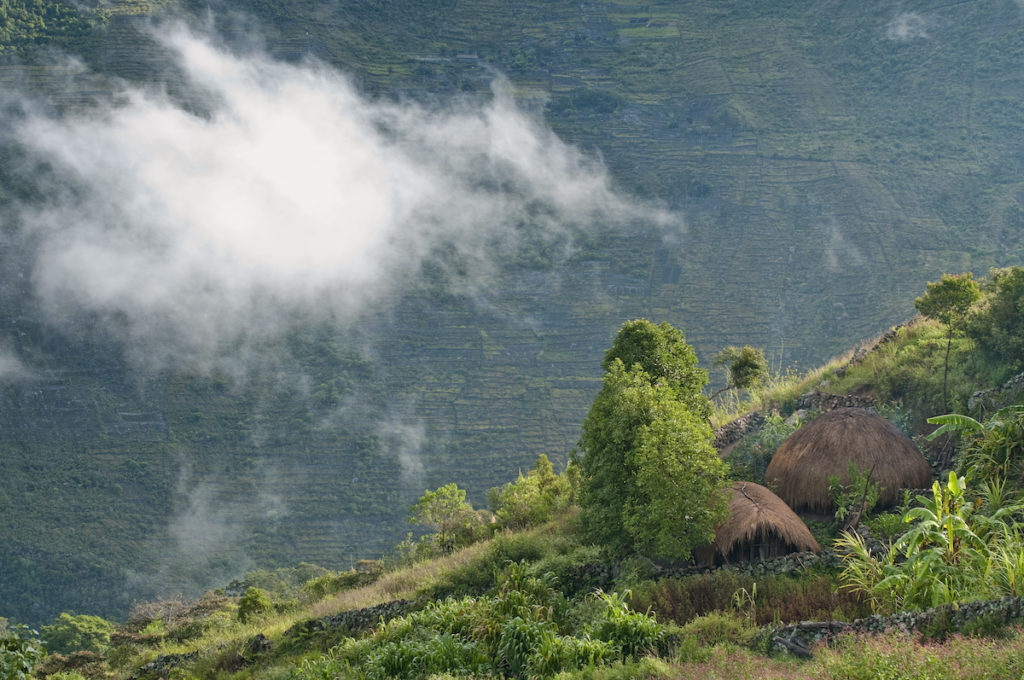Teabags have been around since the early 1900s. They were initially invented to offer a convenient way to brew a single cup of tea. Using teabags would allow tea drinkers to avoid the perceived mess of loose leaf teas, and were a convenient way to completely remove tea leaves from the water all at once. This prevented tea leaves from being steeped too long and made it easier to clean the teapot in which the brewing occurred.
It wasn’t until the 1950s that teabags gained significant popularity; this was the first decade in which convenience products were in high demand. With increased demand, companies began looking for the most economical way to mass-produce single-serving teabags. Nowadays, they are machine produced in large quantities, packaged, and stored in warehouses for longer periods of time.
Size of Tea Leaf Pieces
Many conventional teabags contain leftovers of dust and “fannings” of picked tea leaves. Fannings are very small pieces that remain after whole and larger pieces of broken tea leaves are sorted. Fannings are used almost exclusively in teabags.
When steeped, broken pieces of tea leaves, relative to whole ones, have already lost at least some of their aroma and essential oils. Fannings have larger surface areas, causing the essential oils to evaporate more quickly than full-size tea leaves. This results in dull or stale teas. The primary benefit of steeping fannings and dust is the convenience of infusing more rapidly. This is beneficial for tea drinkers in a rush. However, it is worth noting that traditional tea preparations put a high priority on not rushing; for example, the careful and quiet preparation of matcha in the famous Japanese “tea ceremony” is centered around a very slow, calming and peaceful process.
When steeped, smaller pieces tend to be more bitter than full leaf teas as more tannins are infused. Tannins are naturally occurring compounds that are found in many plants, especially leaves and unripe fruits. When balanced with other flavors, tannins may contribute to a pleasant taste, but too much will make a tea virtually undrinkable (if you have ever grimaced at the taste of an over-steeped black tea, you know about tannins).
There are also broken leaf teas at higher grades than fannings. These are labeled “Broken” and are typically not included in conventional teabags. Many “Broken” tea leaves are still very high quality even if they are several steps down from truly whole leaves. It is also worth noting that fannings and dust of high-grade teas can be more flavorful than the whole leaf versions of cheaper teas.
Differences in Caffeine Levels
The larger surface area of the broken tea leaves found in bagged tea results in higher levels of caffeine extraction during steeping. This extraction occurs more quickly than in full-leaf or higher grade teas.
However, there are many factors affecting caffeine levels besides size. These include the variety, whether tips (buds) or stems are used from the plant, and the steeping method. All natural teas, including white, green, and black teas contain caffeine. Rooibos and other herbal infusions are naturally decaffeinated. Teas made with tips/buds (newer leaves) tend to have higher caffeine levels than those made with older leaves or the stem. In addition, tea leaves that have been brewed with hotter water for a longer period of time will produce a more caffeinated cup of tea than those that are steeped with cooler water for a shorter period of time. Considering all the factors affecting caffeine content in teas, it would be inaccurate to make the generalization that conventional teabags produce more caffeine relative to loose leaf teas.
Taste
Teabags purchased from a grocery store will likely have the same flavor profile year to year as they are mass-produced and standardized. Companies producing these bagged teas prioritize cost and consistency. On the other hand, loose leaf teas are processed based on region, and the yearly or seasonal differences due to changes in climate and growing conditions are embraced. These differences may be reflected in the taste and aroma. As a result, loose leaf teas offer a wider range of flavor profiles compared to the dull standardized flavors of teabags found in grocery stores.
Differences in taste between loose leaf and bagged teas are particularly noticeable with green and white teas. Bagged green and white teas tend to be stale and bitter compared to loose leaf versions. Bagged black tea is thought to produce a decent cup. However, it does not offer the flavor varieties present with loose leaf versions.
It is also worthwhile to note that bagged teas often lose flavor after one steeping while loose leaf teas can be steeped several times to brew flavorful tea.
Health Benefits
The health benefits of tea vary across types. Green, white, and black teas are found to be high in antioxidants, while green and white teas also include catechins and theanine. These compounds provide an array of health benefits. It is thought that bagged tea, with its fannings and dust, provide a much lower level of health benefits. This is due to the essential oils already being lost when the tea leaves were broken into small pieces. In addition, with the mass production of teabags, it is likely they contain highly processed and older tea. Over time, tea loses the potency of health benefits. It is also believed the bag itself filters out some of the vitamins during the steeping process.
Teabag Varieties
The teabag itself contributes to the quality and taste of the brewed tea. Because full leaves will offer more flavor and antioxidants, the size and material of the teabag matter. Conventional teabags are made with paper material that constricts the flow of water. It also prevents tea leaves from expanding to maximize flavor. Often this paper is bleached and can add unwanted chemicals and flavors to the cup.
Open weave sachets address some of the issues with water flow, allowing fuller flavor extraction from the tea leaves. These higher-quality, larger teabags come in pouches, “socks”, and pyramid shapes that can hold full leaf tea or larger broken leaves.

Despite the improvements in teabag types, there is no match to the flavor and aroma produced when steeping loose leaf tea. This can be done directly in the water or using an infuser. Without the restriction of a bag, the extraction of flavors, vitamins, minerals, and aromas from the leaves is maximized. Steeping tea this way gives the larger tea leaf pieces the opportunity to fully expand in the hot water, more so than when any type of teabag is used.
Teabags can be more economical and can offer more convenient steeping and cleanup. However, nothing beats the flavors, aroma, and health benefits enjoyed from steeping loose leaf teas directly in the water. Take the time to try a loose leaf tea that matches your flavor preferences – you won’t be disappointed. Read about the premium selection of freshly sourced teas we offer. If you need help, contact us and we can help you make your final selection.
Once your premium tea has been delivered, be sure to visit our site to learn how to steep the perfect cup of tea.



